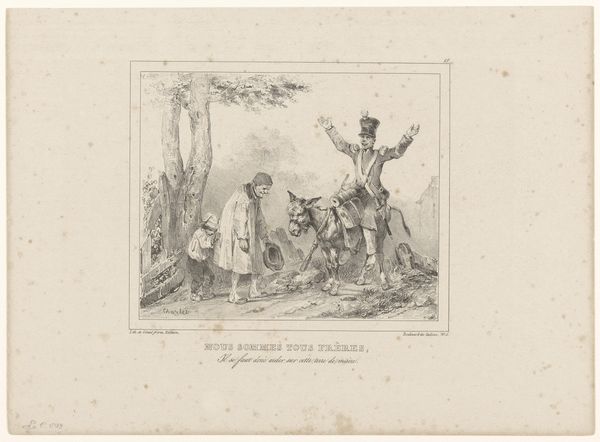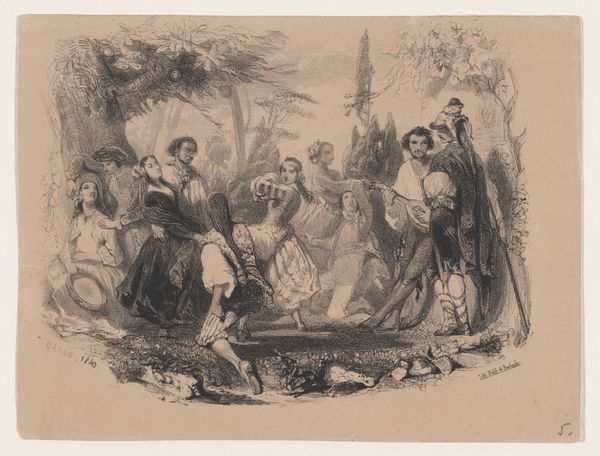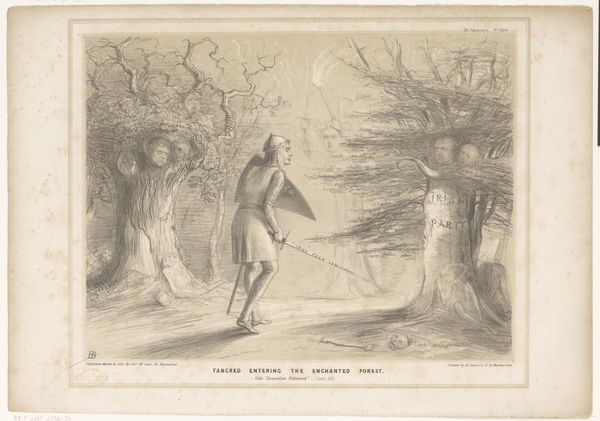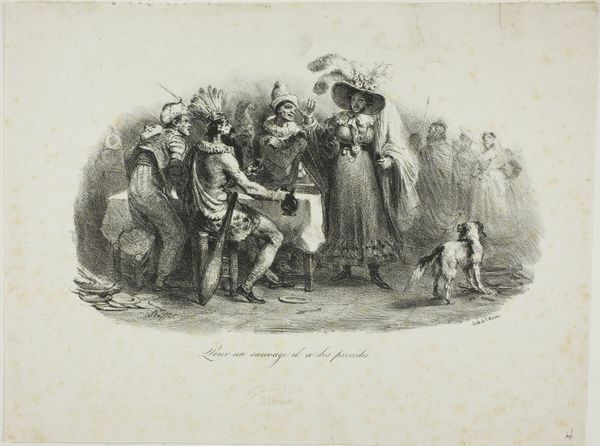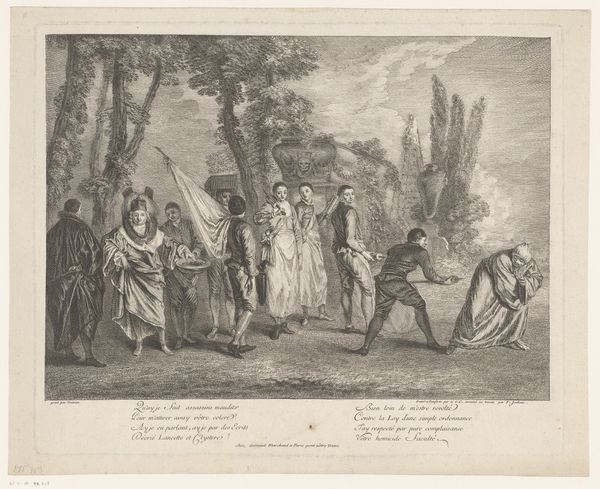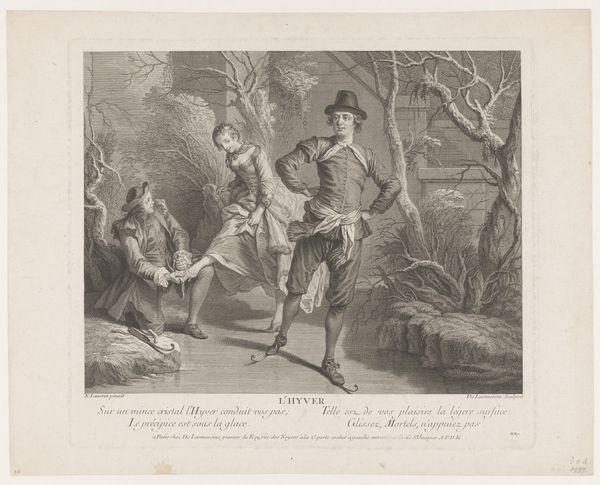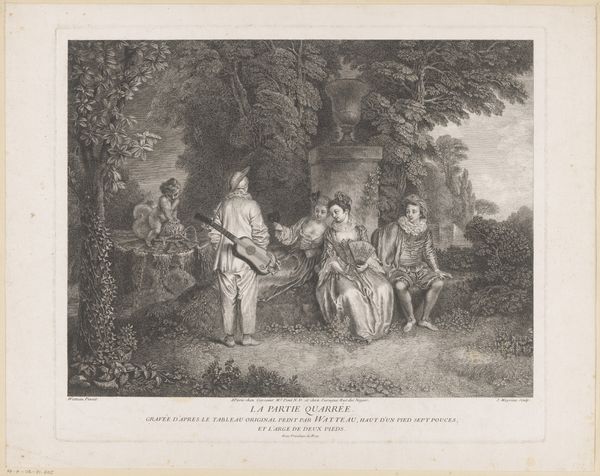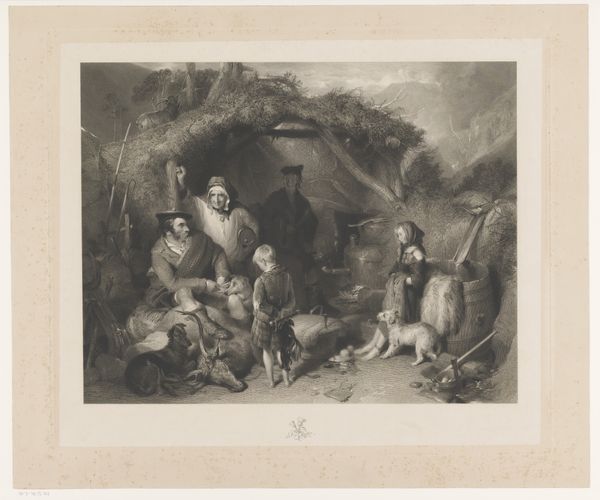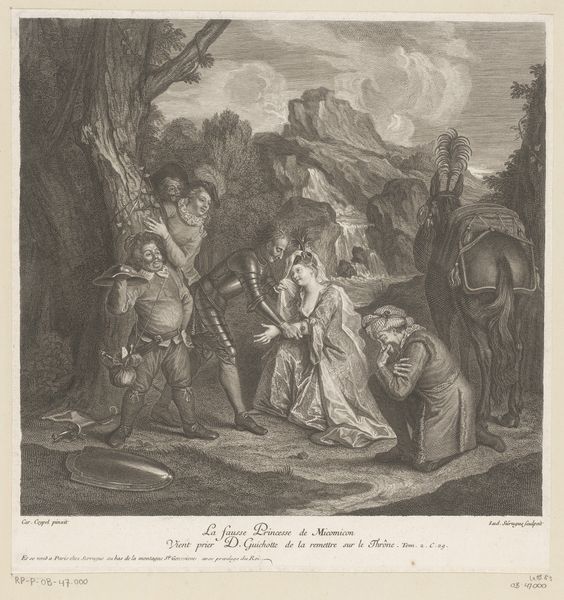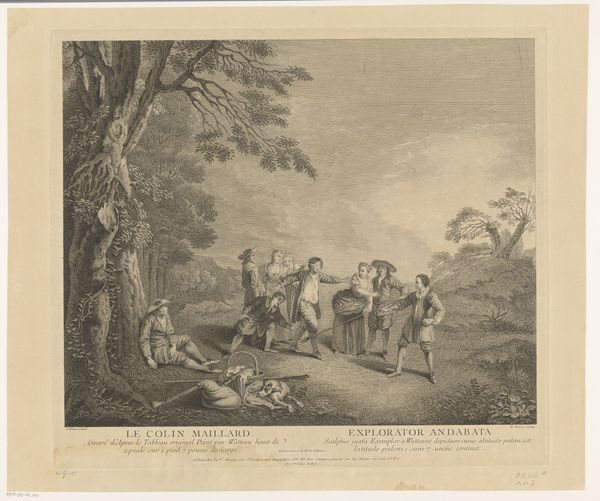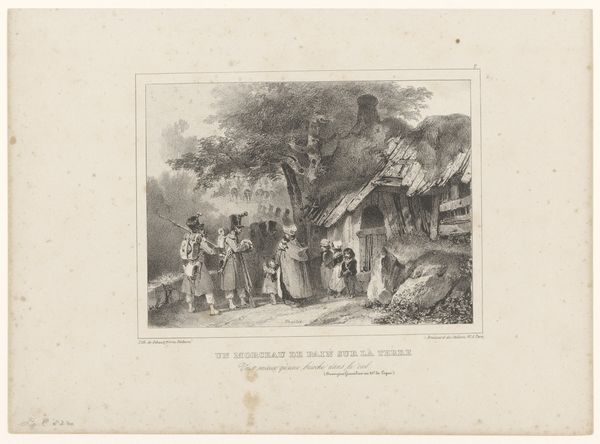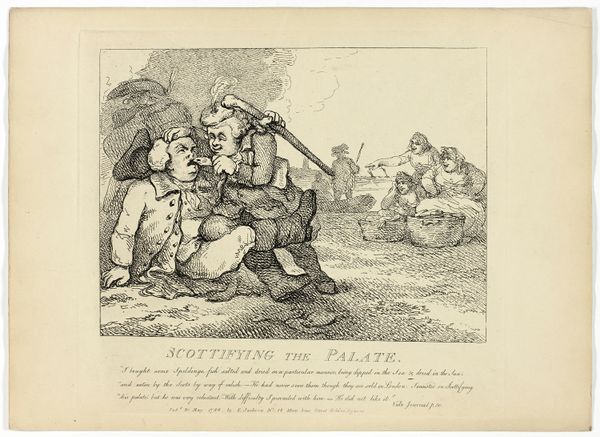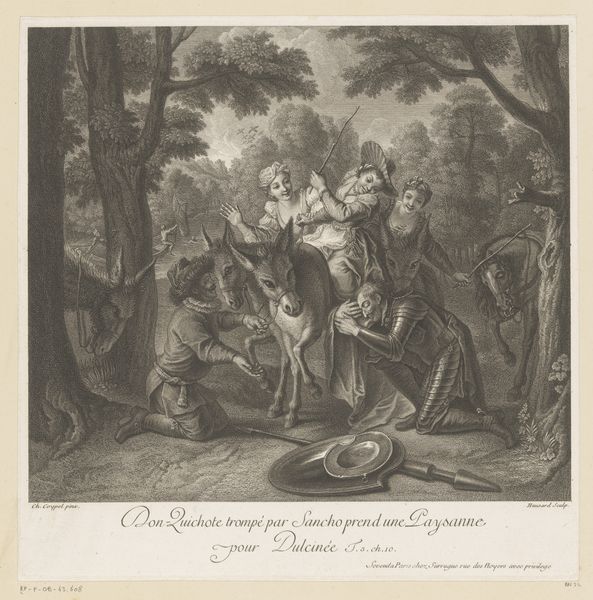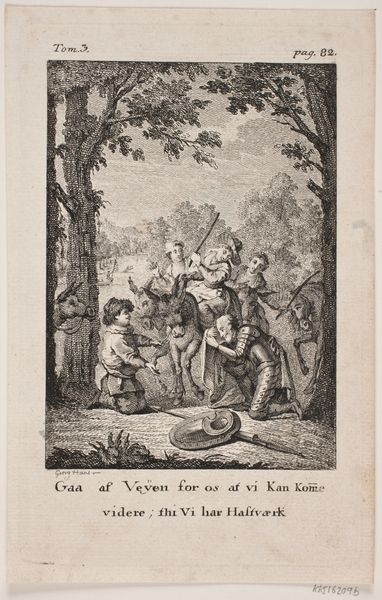
lithograph, print
#
portrait
#
lithograph
# print
#
caricature
#
figuration
#
19th century
Dimensions: height 300 mm, width 445 mm
Copyright: Rijks Museum: Open Domain
Curator: This lithograph, possibly from 1844, by John Doyle, is titled *Lord Palmerston in het land van de apen*. The piece resides here at the Rijksmuseum. Editor: It’s… startling. The stark contrast between the meticulously rendered figure of Lord Palmerston and the surrounding simian crowd creates a real sense of unease. Curator: The artist cleverly uses caricature to satirize Lord Palmerston, contrasting him with ape-like figures who represent, it is believed, the foreign policies and inhabitants of dominion territories under British control. What reads to you formally as stark unease would have resonated for the Victorian viewer, pointing to the tensions in Britain’s complex relationships with colonial people. Editor: The formal composition echoes that reading of it, with that isolated tree further establishing the notion of the English gentleman figure's singular presence and distance. Notice how Doyle renders Lord Palmerston with a clear, almost idealized light. This contrasts starkly with the simians lurking in the shadows; the gradations are all significant. Curator: Precisely! The darkness surrounding them doesn't only convey them as shadowy figures; these shadows can act as signifiers, embedding coded symbolic significance. Here it represents ignorance and perhaps backwardness as opposed to Palmerston, the torch bearer of progress and, implicitly, enlightenment. This relates to what in art history has been referred to as “dark primitivism.” Editor: That light emphasizes the rigid posture, suggesting a psychological detachment from his environment, all rendered through this delicate manipulation of lithographic greys. Curator: And it also alludes to themes of travel narratives in the era, positioning Palmerston as the intrepid explorer or enlightened visitor among these "others" or strangers. Editor: So, through contrasting visual vocabularies and an array of tonal range, a complex interplay between subject and environment takes hold, establishing not only pictorial space but political distance as well. It is like he does not understand he IS in a jungle. Curator: Yes, a visual expression that speaks to anxieties and prejudices rooted in a complex colonial past. Thanks for decoding these formal considerations, allowing a more insightful interpretation. Editor: Always happy to dive deep. These historical, cultural prints are full of insights on a given culture’s psychological anxieties!
Comments
No comments
Be the first to comment and join the conversation on the ultimate creative platform.
